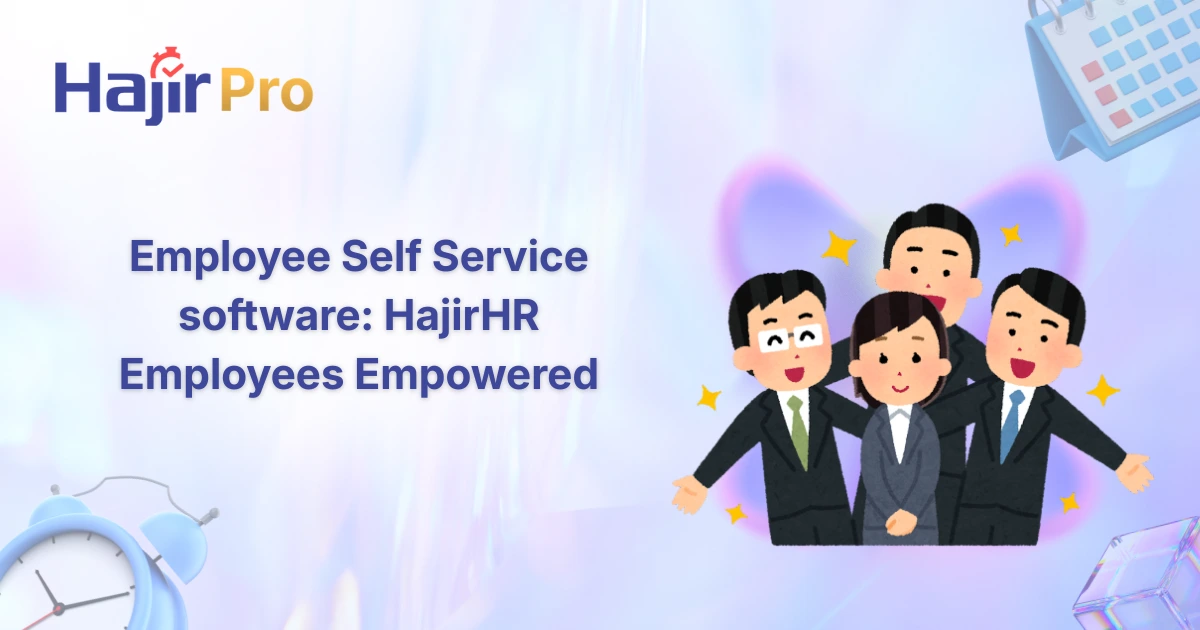Calculating ROI for HRMS Singapore: HajirHR
Adopting an HRMS Singapore solution is one of the most strategic investments a company can make today. With growing compliance requirements, hybrid workforce trends, and the need for accurate payroll management, calculating ROI (Return on Investment) is essential for decision-makers.
This guide explores how Singapore businesses can measure the financial and operational benefits of moving from manual HR processes to automated payroll software and HRMS solutions.

Why HRMS ROI Matters for Singapore Companies?
Singapore HR software market is growing because of digital transformation and more rigid regulations. Installing Singapore HR compliance software is not just a technological upgrade but a strategic move to:
- Reduce HR operating costs
- Reduce errors and improve accuracy
- Reduce compliance and data- security risks
These factors directly influence ROI, especially with CPF, IRAS tax reporting, and PDPA obligations.
HRMS ROI – Key Drivers of Returns
1. Cost Savings – Manual HR vs Automated HR
Hidden costs of manual HR processes often include:
- HR staff time spent on spreadsheets and paper forms
- Payroll inefficiencies, long hours, and human errors
- Resource wastage on data entry and reporting
- Document management overheads
How HRMS Singapore Reduces Costs
- Payroll automation: provides automatic CPF and IRAS deductions, among other statutory requirements.
- Centralized cloud database: gives a single repository of payroll, leave, attendance and records of employees.
- Error reduction: less rework for payslips and reports
- Government support: PSG-approved HRMS modules for SMEs
Example:
A medium-sized SME spends SGD 3,000 monthly in HR administrative services. In the implementation of an HRMS in Singapore, it reduces the administrative workload to 60 percent, leading to a cost of no more than SGD 1,200 per month. At an SGD 400 monthly subscription, the net savings will be SGD 1,400 per month, or SGD 16,800 per year.
2. Efficiency Savings, Time Savings & Reduction in error
HRMS frees staff from repetitive tasks:
- Automated payroll runs
- Attendance reconciliation via mobile or biometric sync
- Employee self-service for leave approvals
- Quick HR reporting and analytics
Estimated Time Saved (Per Month):
Task | Hours Saved |
Payroll | 12–20 |
Attendance Reconciliation | 8–15 |
Leave Management | 5+ |
Reporting/Audits | 5–10 |
Total = 30–50 hours/month, enabling HR teams to focus on strategic initiatives.
Reducing Errors: Manual processes can cause CPF mistakes, miscalculated overtime, and duplicate data. An HRMS can cut error rates by 80–95%, saving both time and correction costs.
3. Risk Mitigation – Compliance & Data Security
With strict Singapore regulations, HRMS helps:
- Auto-calculate CPF contributions
- Reports that comply with IRAS and MOM
- Audit trails
- Payroll errors resulting in penalties
Even a single compliance breach avoided can justify the HRMS cost.
Data Security & PDPA Compliance
- Employee data stored securely with cloud encryption
- Role-based access and restricted permissions
- Audit logs or logs tracking changes in data
HRMS creates less legal, reputational, and internal risk.
How to Calculate HRMS ROI?
Formula:
Where the percentage of the ROI is calculated as follows: (Annual Gains – Annual HRMS Cost)/Annual HRMS Cost) 100.
Annual Gains Include:
- Time savings value
- Error reduction and compliance cost avoidance
- Admin cost savings
Annual HRMS Cost Includes:
- Subscription fees
- Implementation
- Training
Example:
- Time savings: SGD 24,000 per year
- Error & compliance benefits: SGD 8,000 annually
- Administrative cost savings: SGD 16,800 annually.
Total Gains = SGD 48,800
HRMS Cost: Subscription SGD 4,800 + Implementation SGD 2,000 + Training SGD 1,000 = SGD 7,800
ROI = (48,800 – 7,800) / 7,800 × 100 ≈ 526%
Even being conservative, the ROI for all SMEs are still all favorable.
Additional Strategic Benefits
In addition to ROI, the HRMS solutions in Singapore facilitate:
- Scalability for company growth without extra admin staff
- Improved employee experience by using self-service portals.
- Analytically backed HR decisions.
Preparedness for the future of remote work or hybrid work arrangements.
Conclusion
HajirHR HRMS is a high ROI investment, which lowers the expenditure, enhances efficiency, and boosts compliance. The systematic ROI calculating model enables the firms to measure financial returns and long-term brand benefits on the employee experience and the organizational productivity.
In the case of Singapore companies, an HRMS is not only a cost-reduction device; it also turns HR into a value-creating activity.
FAQ – HRMS Singapore
- How do companies calculate HRMS ROI?
ROI = (Annual Gains – HRMS Cost) / HRMS Cost x 100 taking into consideration the time saved, errors, compliance benefits, and administrative savings. - What are the monetary advantages of the HRMS Singapore systems?
There are notable savings involved in less administration time of HR, automated payroll, decreased compliance risk and errors. - Are Singapore companies in need of Singapore HR compliance software?
Yes. HRMS guarantees that it meets the requirements of the CPF, IRAS, MOM and PDPA, thus eliminating penalties and mistakes. - What is the amount of time that payroll software can save the HR teams?
Automation will save time to the tune of 30-50 hours a month in terms of payroll, attendance, leave management, and reporting. - Is HRMS suitable for SMEs?
Yes. The cloud-based HRMS solutions allow for feasible anywhere SME costs and little to no manual work, errors or other compliance risks.



